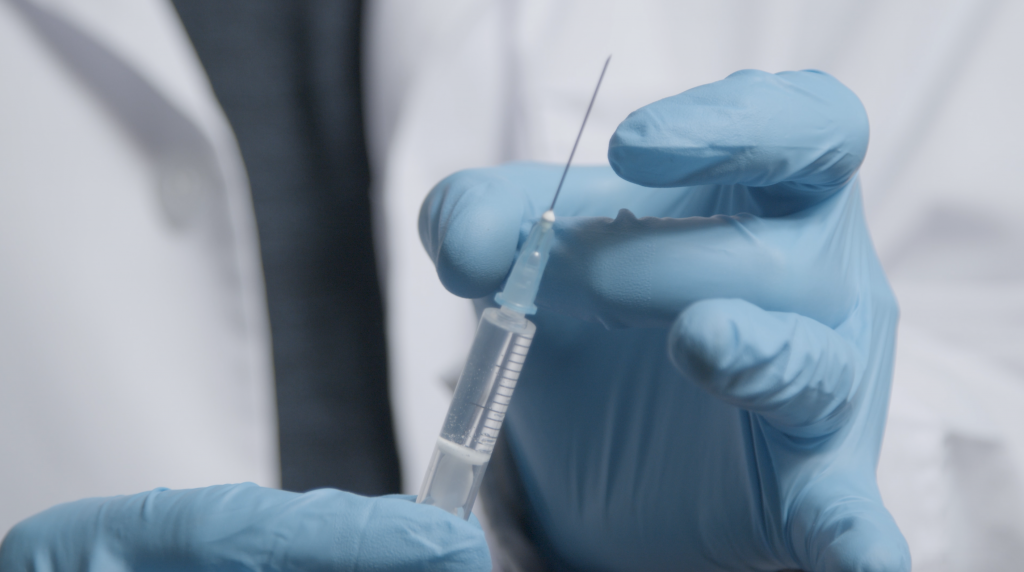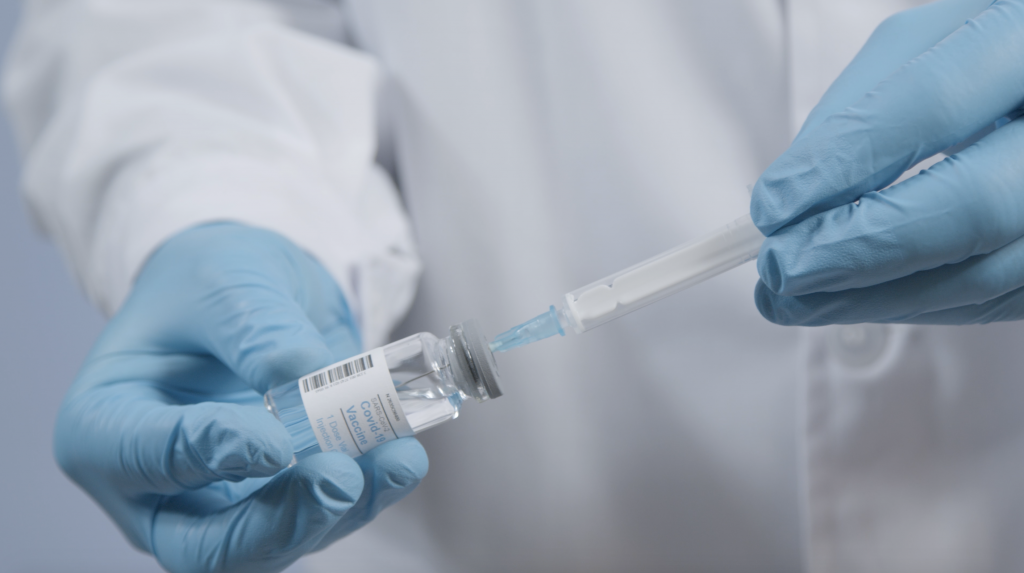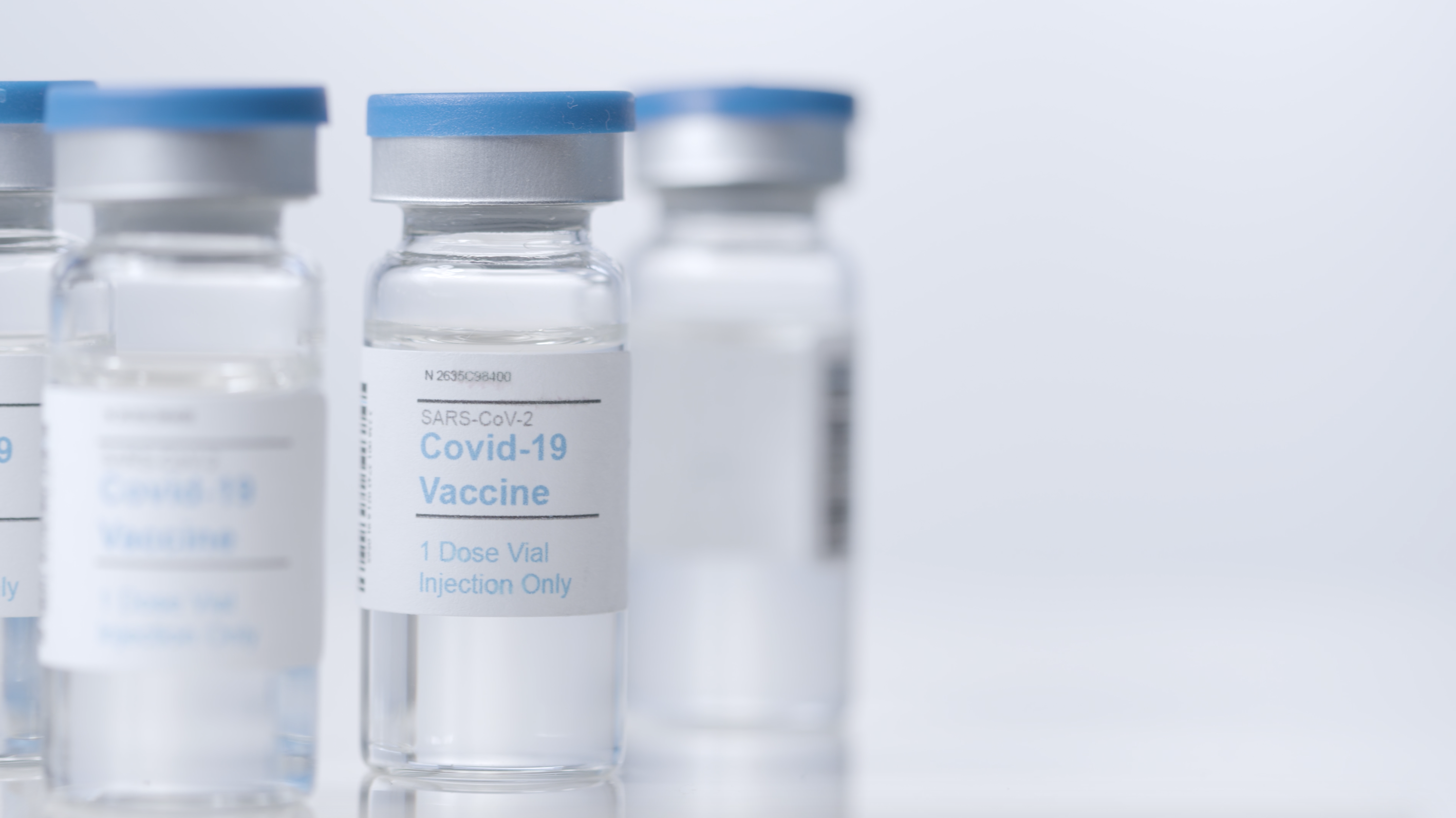By Grace Rodgers
Medill Reports
“We’re finally seeing a light at the end of the tunnel and we have to allow ourselves to get there,” said Dr. Lewis Nelson, the chair of emergency medicine at Rutgers New Jersey Medical School and University Hospital.
Since January, new reported cases of COVID-19 have steadily declined across the United States, according to the Centers for Disease Control and Prevention’s COVID-19 Data Tracker. The decline is in-part thanks to the introduction and success of emerging vaccines. In the beginning of June, the CDC reported roughly 40% of the U.S. population is fully vaccinated.
Vaccines have been around for decades. One of the earliest successful vaccines was to treat smallpox. In 1796, Dr. Edward Jenner developed the vaccine by inoculating a patient with a related virus, cowpox.
In response to the vaccine, the patient’s body created antibodies, our body’s cells that attack disease invaders. The antibodies created against cowpox ultimately recognized and destroyed the smallpox virus. Even though the patient wasn’t treated with the smallpox virus, doctors learned that the human body could create antibodies against a virus through the inoculation of a less harmful one.
Knowledge learned through Dr. Jenner’s discovery still applies today and remains particularly relevant amidst the coronavirus pandemic.

Proper vaccine storage and monitoring practices play an essential role in safeguarding the health and safety of communities from vaccine-preventable diseases, according to the Centers for Disease Control and Prevention. (Videvo)
How do COVID-19 vaccines work?
Vaccines introduce genetic material into the body with instructions to produce the coronavirus’ signature “spike protein,” the part of the virus that latches onto human cells. Once an immune response develops after vaccination, the spike protein is then recognized as a foreign invader, which triggers the immune system to respond with antibodies that neutralize the protein.
During this process, some cells that were involved in the immune response become what are called “memory cells.” If the coronavirus ever returns, those memory cells recognize the spike protein and initiate a variety of stronger and faster responses. In the end, the vaccine is able to prime an individual’s immune system into identifying and responding to the virus.
This concept is similar across the three vaccines FDA-approved for emergency use: Pfizer-BioNTech, Moderna and Johnson & Johnson. In short, the three vaccines achieve the same type of immune response, but the genetic material and carrier are slightly different.
So far, experts have used two different approaches to develop COVID-19 vaccines: an mRNA vaccine and a viral vector vaccine.
mRNA Vaccines: Pfizer-BioNTech and Moderna
Pfizer and Moderna vaccines function the same, using a new technique that injects isolated, noninfectious genetic material into the body.
The vaccine is essentially a synthetic messenger RNA (mRNA) molecule encapsulated in a fatty droplet, known as a lipid nanoparticle, which helps get the genetic material into the body. The mRNA then delivers its instructions to the body’s cells on how to make copies of the coronavirus’ spike protein.
“When you’re getting a Moderna or Pfizer vaccine, you’re not getting really anything but the message necessary for making the spike protein,” said Dr. Jim Rago, a biology professor at Lewis University.
Once copied, the body’s cells recognize the spike protein, and the immune system responds with antibodies to neutralize the protein. The response is stored in some immune cells’ memory. If the host comes in contact with the coronavirus, the body’s cells will recognize the spike protein and neutralize the virus.
Both the Pfizer and Moderna vaccines showed success in initial trials, ranking in the 90th percentile on efficacy, an estimate to predict the number of people protected from contracting the virus.
The Pfizer vaccine is 95% effective in preventing COVID-19 in those without prior infection and 100% effective in preventing severe disease as defined by the U.S. Centers for Disease Control and Prevention. Back in December, Pfizer became the first COVID-19 vaccine to receive an Emergency Use Authorization by FDA following news of the company’s successful clinical trial data. Today, the Pfizer vaccine is being distributed across the country as a two-dose vaccine, with 21 days between the first and second shots.
The Moderna vaccine was the second COVID-19 vaccine authorized for emergency use by the FDA — about one week after Pfizer. Functioning as a two-dose vaccine with 28 days between each shot, the Moderna vaccine is 94.1% effective at preventing COVID-19 in those without prior infection.
Viral Vector Vaccine: Johnson & Johnson
Johnson & Johnson functions as a viral vector vaccine, using a pre-existing, benign virus to carry the genetic material into the body. Biochemists engineered this innocuous virus to act as a shell carrying, protecting and delivering the genetic material into the body.
“Instead of taking the piece of RNA, putting it in a little lipid sphere and putting that into your cells, you’re actually giving the person a virus that has that spike protein message in it,” said Dr. Rago.
Another aspect that’s different in a viral vector vaccine is its genetic material. The viral vector vaccine uses a DNA molecule, which then encodes RNA instructions to produce the coronavirus’ spike protein. Once produced, the spike protein triggers the immune system to respond with antibodies that neutralize the protein.
Similar to Pfizer and Moderna vaccines, memory cells store this response. If the host comes in contact with coronavirus, memory cells will be able to recognize the spike protein and neutralize the coronavirus.
In February of this year, the FDA granted an Emergency Use Authorization for Johnson and Johnson, making it the third COVID-19 vaccine available in the United States. The one-shot vaccine is 72% effective at preventing COVID-19 and 86% effective at preventing severe illness and death from the virus.

None of the COVID-19 vaccines FDA-approved for emergency use contain the live virus that causes the coronavirus, meaning a vaccine cannot make people sick with COVID-19, according to the Centers for Disease Control and Prevention. (Videvo)
Is one type of vaccine better?
“The first vaccine you can get is the best vaccine you can get,” said Dr. H. Dirk Sostman, the President of Houston Methodist Academic Institute.
Most experts agree there is not enough conclusive evidence to support the idea that one vaccine is better than another. All three vaccines approved for FDA emergency use provide similar protection against severe COVID-19 hospitalization and death.
“People come to a bunch of conclusions that probably are not warranted, but you can understand why they might. They’re new technologies. They’re a little complicated to explain and understand,” said Dr. Sostman. “But the actual efficacy of these vaccines is pretty similar. So, the sooner you can get any one of these vaccines, the better.”
Can you still spread COVID-19 after vaccination?
So far, there is no conclusive evidence that the three FDA-approved COVID-19 vaccines can completely stop people from infection or transmission of the virus, meaning it is still essential for people to wear masks and social distance. However, preliminary research suggests fully vaccinated people reduce their risk of COVID-related hospitalization by 94% — a notably high effectiveness compared to other vaccines.
According to the Center of Disease Control and Prevention, people are considered fully vaccinated two weeks after their final vaccine dose — two weeks after the first dose of the Johnson & Johnson vaccine, or two weeks after the second dose of Pfizer or Moderna vaccine. Immunity lasts at least six months after the second dose of an mRNA vaccine, but experts don’t yet know the scale of long-term immunity COVID-19 vaccines offer.
Still, there will always be a spectrum of immunity to coronavirus infection. Experts suggest populations could achieve herd immunity over time, which occurs when a high enough percentage of the population is immune to the coronavirus, making it difficult for the virus to spread. The United States is moving closer to achieving that threshold, and vaccines will play an essential role in increasing overall population immunity.
“Look at it from COVID’s perspective. The more people that are protected, the fewer potential homes it has. And the fewer homes it has, the fewer viruses there will be on the planet. And the fewer viruses there are, the lower the chances are for mutations and variants to pop about,” said Dr. Rago. “So the more people you have protected in the population, the more protection everybody gets.”

On May 13, 2021, the director of the Centers for Disease Control and Prevention advised that fully vaccinated people do not need to wear masks or practice social distancing outdoors and in most indoor settings. (Videvo)
Will COVID-19 go away with vaccines?
In 1918, there was another pandemic known as the Spanish flu. Just as ‘Sars-CoV-2’ is the name of the virus that causes the coronavirus, H1N1 is the name of the virus that caused the Spanish flu. The H1H1 virus spread fast, causing roughly 50 million deaths worldwide at the time.
However, the virus itself has changed over time, causing less damage and deaths. Part of the reason it causes less damage is because populations are always exposed to the virus, so individuals build immunity. Plus, people receive annual flu vaccines, which effectively boosts immunity and reduces the spread of the virus.
Sars-CoV-2 was so destructive initially because there was no immunity among the population. And since then, the coronavirus has evolved with the emergence of new coronavirus variants, including the B.1.1.7, B.1.351 and P.1 lineage. So far, none of the variants appear to have escaped the antibodies, meaning the spike protein hasn’t changed enough to render the vaccines ineffective. Plus, through social distancing, mask-wearing, disinfecting and now vaccine distribution, populations have been able to build immunity and new cases have declined.
Experts speculate the coronavirus will evolve in a similar way to the H1N1 virus. It will take time to get there. But if we work together, we can get closer to reaching the light at the end of the tunnel.
Grace Rodgers is health, environment and science reporter at Medill. You can follow her on Twitter at @gracelizrodgers.

